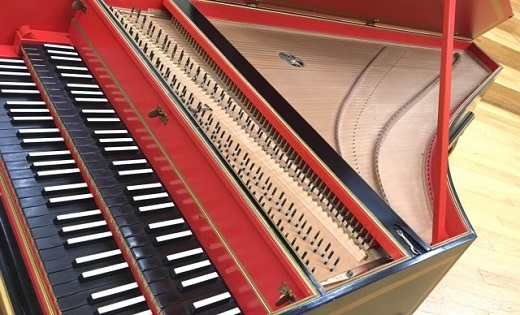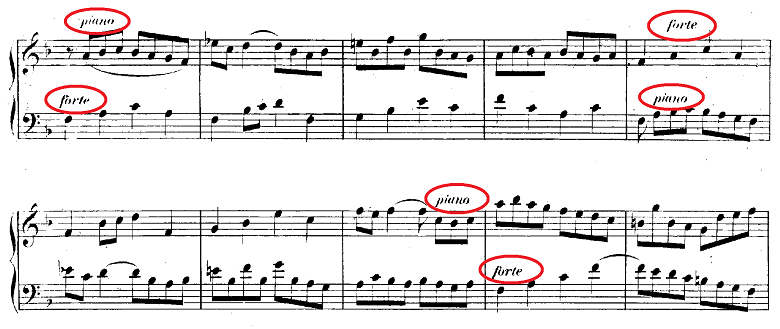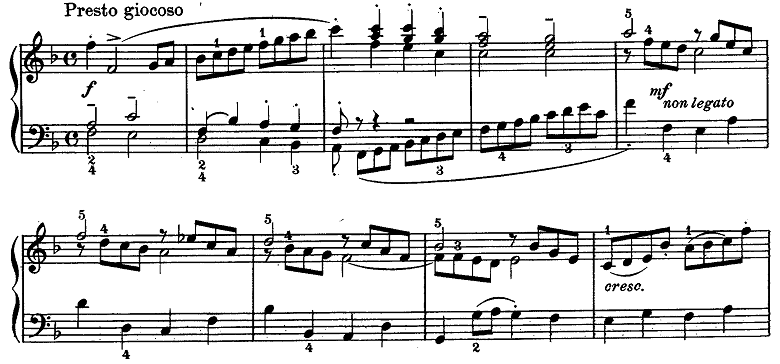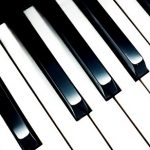
Bach’s Italian Concerto is most famous for its first movement, but the third movement, also in F major like the first, is a very bright and lively piece.
For those who love Baroque music like Bach, this is definitely a piece you’ll want to tackle at least once.
This piece is included in Bach’s Clavier-Übung II and was originally written to be performed on a two-manual harpsichord.
Interpreting how to play Bach is always challenging, as there are various perspectives and preferences to consider…
However, I’d like to explain how to approach this piece from the perspective of expressing it on a modern piano while preserving the image of its original harpsichord performance!
What is the Difficulty Level?
The difficulty level of this piece is generally considered to be advanced.At first glance, the score might appear relatively straightforward, but it’s one of those tricky Bach compositions where you think, “It’s harder than it looks!” (laughs).
For those studying Bach, you’ll need to be at the level where you can play three-part pieces like the Sinfonias, which come after the Inventions.
Based on my personal experience playing this piece in the past…
Even if you reach the level where you can “play it somehow,” getting to the level where you can perform it confidently in front of an audience requires significant effort.
The fast tempo and the minimal use of the pedal make it impossible to hide any mistakes, so it requires not just technical skill but also a lot of focus and stamina.
I’m not trying to scare you! (laughs)
It just means this piece is truly worth practicing.
Another challenging aspect is that the excitement of playing it can lead to gradually increasing the tempo unintentionally.
First, focus on learning the notes slowly and carefully. Then, use a metronome to gradually increase the tempo ♪
Recommended Sheet Music
Here is my recommended sheet music.The Wiener Urtext Edition is published by Ongaku no Tomo Sha.
I like the red cover of the Wiener Urtext Edition—it’s so stylish. (Is that what matters? Laughs)
It also includes detailed explanations and fingerings!
If you’re looking for something more affordable, the Zen-On Piano Piece edition is another good option.
The Zen-On edition provides detailed dynamic markings, so if you prefer to add your own interpretation to the music, the Urtext edition might be a better choice.
Tips for Playing
First of all:I mentioned earlier that this piece was written for a two-manual harpsichord. Here is what such an instrument looks like.

The instrument has two keyboards, with reversed black and white key colors, making it look rather unusual.
Although it is smaller in size than a modern piano, it produces surprisingly loud sounds because the upper and lower keyboards can be played simultaneously.
Here is a video of a performance on a harpsichord. Have a listen!
(The performance starts at 0:28.)
If you’ve watched the video, you may have noticed…
When the lower keyboard is played, the upper keyboard also moves! This mechanism creates a very rich resonance.
Occasionally, the upper keyboard is played. The sound from the upper keyboard is softer and quieter.
The harpsichord cannot produce dynamic differences like a modern piano, so players control the tone and volume by distinguishing between the upper and lower keyboards.
Now, let’s look at the sheet music.
 (Video 0:28~)
(Video 0:28~)This is the sheet music from the urtext edition (a version that faithfully reproduces the composer’s original notation), which does not include dynamics or expressive markings.
However…
If you look closely, there are markings for “forte” and “piano.”
These markings do not simply indicate “loud” and “soft” dynamics. Instead, they refer to the lower and upper keyboards of the harpsichord.
As seen in the video:
– “Forte” → lower keyboard
– “Piano” → upper keyboard
The lower keyboard produces a fuller sound, which naturally results in louder dynamics, but it’s better to think of this as a change in tone rather than volume.
Imagine an orchestra’s tutti (ensemble) versus a solo performance!
 (Video 0:57~)
(Video 0:57~)From measure 25, the right hand is marked as piano, and the left hand as forte.
On the harpsichord, the right hand would be played on the upper keyboard. On the piano, however, treat the forte section as the main melody and make the left hand stand out slightly.
After that, the melody alternates between the left and right hands.
This basic approach works perfectly!
In other words, focus on which voice carries the main melody and play accordingly.
In the video, you’ll notice sections where the upper keyboard is played beyond the score’s markings. For example, in repeated phrases, the second iteration is played on the piano to add variation.
These days, many sheet music editions include added dynamics and expressive markings.
For instance, something like this:

Staccatos, accents, slurs, crescendos, and other details are carefully noted.
If you’re playing on a modern piano, it’s perfectly fine to incorporate these expressions.
That said, if you prefer a faster tempo, a simpler approach to dynamics, akin to playing on a harpsichord, can still be highly effective.
Why?
Because even with a straightforward performance, the piece has an inexplicable richness and brilliance to it!
This is what makes Bach’s music so incredible, don’t you think? (laughs)
Summary

- The difficulty level is advanced. Rather than technical skills, it requires focus and endurance!
- Keep in mind the image of performing on a two-manual harpsichord!
- As a general rule, the part marked as “forte” contains the main melody, so aim to bring it to the forefront in your performance!
- If you want to add more expression, refer to modern editions of the sheet music that include detailed annotations!
These are the main points for playing this piece.
As mentioned earlier, one of the great aspects of Bach’s music is that it still sounds brilliant even when played simply.
Please give it a try and aim for a performance that feels great to you!♪
- IMSLP (Sheet Music Link)
This is the public domain sheet music introduced in this article as the urtext edition. It was published by Breitkopf & Härtel in 1853. The third movement begins on page 9. - IMSLP (Sheet Music Link)
This is the public domain sheet music introduced in this article as the modern edition. It was published by The University Society in 1918. The third movement begins on page 12.
- J.S. Bach "Goldberg Variations" Masterpiece! The Charm of Historical Harpsichords and the Beauty of the Melody 2017/7/9
- How to Master Bach’s ‘Italian Concerto, First Movement’: Difficulty Level Explained! 2018/9/5
- Difficulty Level and Tips for Playing Bach’s “Italian Concerto, Third Movement” 2018/11/22 ←Currently Viewing Article








